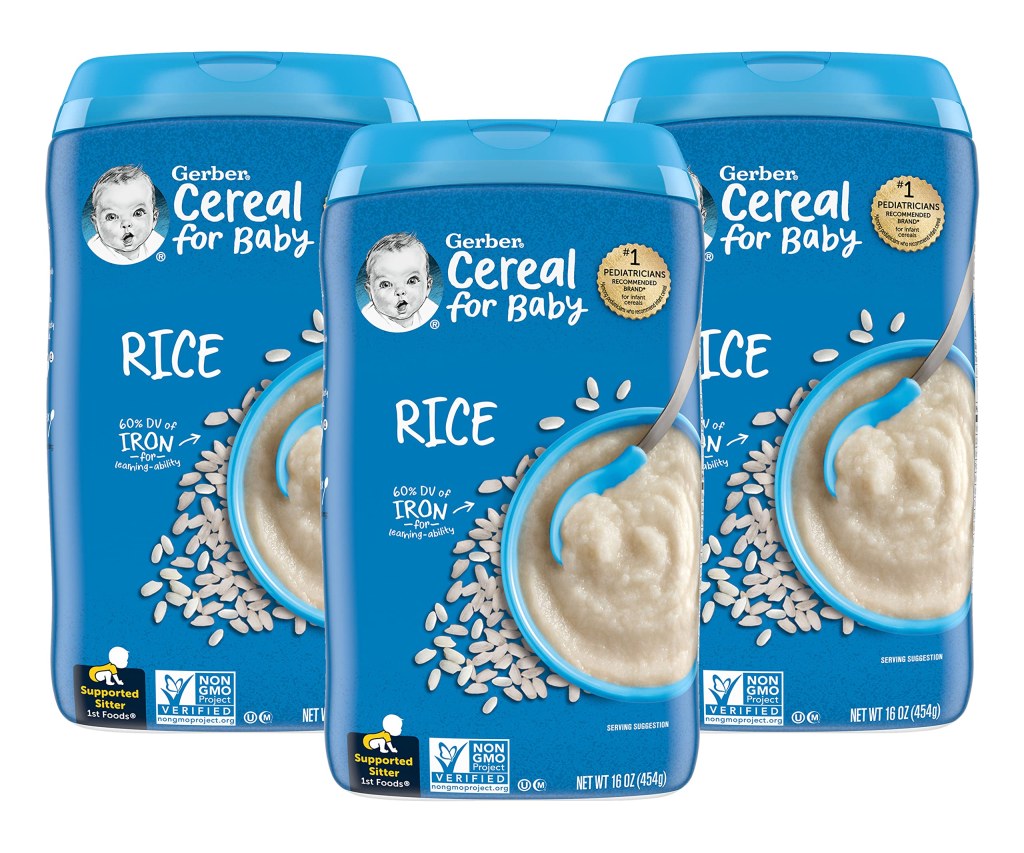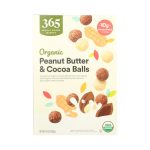Introducing NutriBabies: Nourishing Cereal De Bebe For Your Little One’s Growth
Cereal De Bebe: A Nutritious Start for Your Little One
Introduction
Dear Cereal Connoisseur,
1 Picture Gallery: Introducing NutriBabies: Nourishing Cereal De Bebe For Your Little One’s Growth

Welcome to the world of baby nutrition, where every bite counts in ensuring your little one’s healthy growth and development. As a parent, you want the best for your baby, and that includes providing them with a nutritious diet right from the start. Cereal de bebe, or baby cereal, is a popular choice for introducing solid foods to infants. In this article, we will explore everything you need to know about cereal de bebe, its benefits, and how to incorporate it into your baby’s diet.
Table: Cereal De Bebe Information

Image Source: media-amazon.com
Topic
Information
What is cereal de bebe?
Cereal de bebe is a specially formulated type of cereal made for infants. It is typically made from grains such as rice, oats, or barley.
Who can consume cereal de bebe?
Cereal de bebe is suitable for infants who are ready to start solid foods, usually around 4 to 6 months of age.
When should cereal de bebe be introduced?
Cereal de bebe can be introduced when your baby shows signs of readiness, such as good head control and the ability to sit with support. Consult with your pediatrician for specific recommendations.
Where can you find cereal de bebe?
Cereal de bebe is widely available in supermarkets, baby specialty stores, and online retailers.
Why is cereal de bebe beneficial?
Cereal de bebe provides essential nutrients like iron, which is important for your baby’s brain development. It also helps in introducing new textures and flavors to their diet.
How to prepare cereal de bebe?
Cereal de bebe is usually prepared by mixing it with breast milk, formula, or water to achieve a smooth consistency. Follow the instructions on the packaging for proper preparation.
What is Cereal de Bebe?
Cereal de bebe is a type of baby cereal that serves as an introduction to solid foods for infants. It is made from finely ground grains such as rice, oats, or barley. These grains are processed to make them easier for babies to digest. Cereal de bebe comes in various flavors and can be found in both organic and non-organic varieties.
Who Can Consume Cereal de Bebe?
Cereal de bebe is suitable for infants who are ready to start solid foods. Most babies are ready for cereal de bebe when they are around 4 to 6 months old. However, it is always best to consult with your pediatrician before introducing any new food to your baby’s diet. They can provide guidance based on your baby’s individual needs and development.
When Should Cereal de Bebe be Introduced?
The introduction of cereal de bebe should align with your baby’s developmental milestones. Look for signs of readiness, such as being able to sit with support and showing an interest in food. Typically, this milestone occurs around 4 to 6 months of age. However, every baby is different, so it’s important to observe your baby’s cues and consult with your pediatrician.
Where Can You Find Cereal de Bebe?
Cereal de bebe is widely available in supermarkets, baby specialty stores, and online retailers. You can find a variety of brands and flavors to choose from. When selecting cereal de bebe, consider factors such as ingredient quality, nutritional content, and your baby’s taste preferences.
Why is Cereal de Bebe Beneficial?
Cereal de bebe offers several benefits for your baby’s nutrition and development. Firstly, it is a good source of essential nutrients, such as iron. Iron is crucial for your baby’s brain development and overall growth. Cereal de bebe also helps in introducing new textures and flavors to your baby’s diet, preparing them for a wider range of foods as they grow.
How to Prepare Cereal de Bebe?
Preparing cereal de bebe is a simple process. Start by selecting a flavor and brand that suits your baby’s needs. Follow the instructions on the packaging for the recommended mixing ratio. In most cases, you will need to mix the cereal with breast milk, formula, or water to achieve a smooth consistency. Gradually increase the thickness of the cereal as your baby gets used to it. Always make sure to use clean utensils and prepare only the amount you need for each feeding.
Advantages and Disadvantages of Cereal de Bebe
Like any food, cereal de bebe has its advantages and disadvantages. It’s important to consider both before incorporating it into your baby’s diet. Here are some pros and cons:
Advantages:
1. Nutritional Value: Cereal de bebe provides essential nutrients like iron, vitamins, and minerals, contributing to your baby’s overall health.
2. Easy to Digest: The finely ground texture of cereal de bebe makes it easier for babies to digest, reducing the risk of digestive discomfort.
3. Introduction to Solid Foods: Cereal de bebe serves as an excellent first step in transitioning your baby from a liquid-only diet to solid foods.
4. Variety of Flavors: Cereal de bebe comes in a wide range of flavors, allowing your baby to explore different tastes and textures.
5. Convenience: Cereal de bebe is readily available and easy to prepare, making it a convenient choice for busy parents.
Disadvantages:
1. Processing and Additives: Some brands of cereal de bebe may contain additives, preservatives, or artificial flavors. It is important to read the ingredient list and choose options with minimal processing.
2. Allergies and Sensitivities: Babies can develop allergies or sensitivities to certain grains or ingredients in cereal de bebe. It is recommended to introduce new foods one at a time and observe any adverse reactions.
3. Limited Nutritional Variety: While cereal de bebe provides essential nutrients, it should not replace a varied and balanced diet. It is important to introduce a wide range of fruits, vegetables, proteins, and grains as your baby grows.
4. Texture and Transition: Cereal de bebe has a smooth texture, which may not fully prepare your baby for the textures of other solid foods. Gradually introduce mashed or pureed foods to help with the transition to different textures.
5. Individual Preferences: Each baby is unique, and their taste preferences may vary. Your baby may not enjoy certain flavors or textures of cereal de bebe, which may require exploring different options.
FAQs about Cereal de Bebe
Q: Can I make my own cereal de bebe at home?
A: Yes, you can make your own cereal de bebe at home using baby-friendly grains and following proper cooking instructions.
Q: Is it necessary to start with cereal de bebe or can I directly introduce other solid foods?
A: Cereal de bebe is not a mandatory first food. You can introduce other single-ingredient purees like fruits or vegetables if you prefer.
Q: How can I tell if my baby is allergic to cereal de bebe?
A: Look for signs of an allergic reaction such as rash, hives, vomiting, or diarrhea. If you suspect an allergy, consult your pediatrician.
Q: Can cereal de bebe be used as a meal replacement?
A: Cereal de bebe is not intended to replace breast milk or formula. It should be introduced as a complement to your baby’s milk feeds.
Q: When can I introduce cereal de bebe with added flavors?
A: It is recommended to start with plain cereal de bebe initially and gradually introduce flavored varieties as your baby’s palate develops.
Conclusion
In conclusion, cereal de bebe is a nutritious and convenient choice for introducing solid foods to your baby. It provides essential nutrients, aids in digestion, and prepares your baby for a varied diet. However, it is important to consider the pros and cons, individual preferences, and consult with your pediatrician. Remember, every baby is different, and their nutritional needs may vary. Enjoy this exciting phase of your baby’s development, and happy feeding!
Final Remarks
Disclaimer: The information provided in this article is for educational purposes only and should not replace professional medical advice. Always consult with your pediatrician or healthcare provider before introducing any new foods to your baby’s diet. The safety and well-being of your baby are of utmost importance.
This post topic: Cereal



